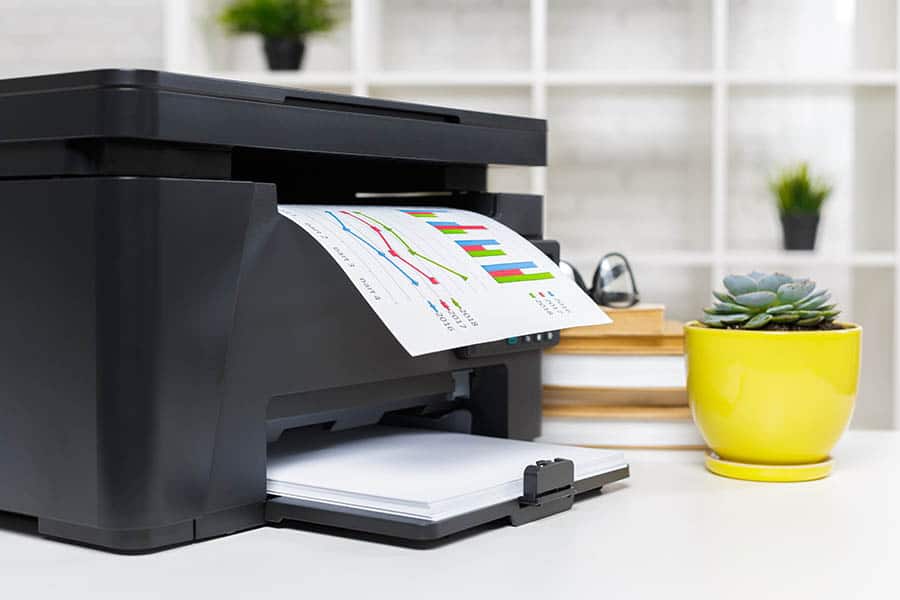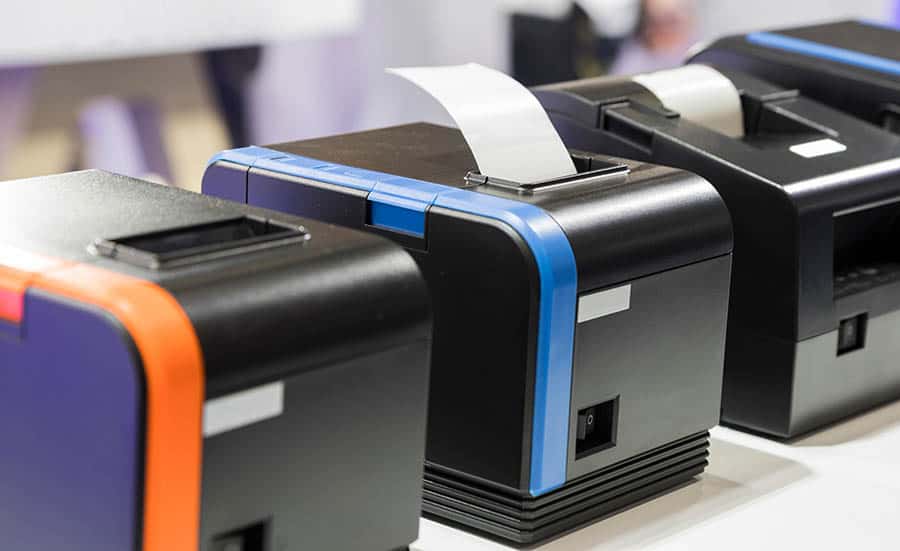If you’re trying to make the decision between a thermal label printer and a laser printer, then generally it’s an easy decision to make.
For the most part, laser printers are known as the better option the majority of the time in comparison to other printing methods like thermal. But what about in the case of printing labels? With the addition of adhesive on the reverse of the label itself, it’s not quite the same as normal printing.
So, let’s look at some of the differences between these two types of printing and see if we can figure out which one would be the better choice for you.
Thermal vs Laser Printer – Which is best?
The reason why you see the majority of label printers available being thermal is that thermal is more suited to this specific task.
Thermal label printers will have a lower cost over their lifetime, as you don’t need to worry about the cost of toner. And, they also produce higher quality labels than laser printers, with next to no smudging during the printing process. So, it’s an easy decision to make between the two.
The key difference between the two types of printer is simply the overall cost for the quality you’re getting. Printing costs with a laser printer are going to be significantly more than with the costs of a thermal printer.
When you’re only printing a small amount of labels, it may not actually matter. But if you need to print in bulk, then the overall expenses can add up very easily.
As well as this, thermal printer can produce a slightly higher quality print than a laser printer can. Generally, both of these styles are intended to print in black ink only, though you can get colour versions of both. If you want colour, then this tends to be pretty expensive.
Essentially, thermal printers are perfectly suited to printing labels. They work well with adhesive backed paper, which is a necessity if you’re going to be working with sticky labels. Laser printers can have problems with this.
So, if you’re looking for the best label printer, then it’s best to opt for a thermal. Let’s look at why this is in a little more detail.
Laser Label Printers

The main benefit of laser printers is that they’re meant to lower the cost of printing in the long term. If you compare them to inkjet printers, then this is true, as ink costs can definitely stack up and make laser printers a better choice for those who need to print in high volumes.
So theoretically, you may think this is the same case for making labels as well. However, this isn’t actually the case when it comes to labels for the most part. They can be good if you only need to print a limited amount, but for consistent label printing, a thermal printer will be better.
There are a few downsides to this which generally make laser printers ineffective for use as label printers. The main issue is the quality of the printing itself. Laser printing works at a high temperature, which it needs to get to in order to actually be able to work.
However, when you combine that with the adhesive back of a label, and it causes some issues. You’ll find labels that have become distorted, and it can effect the quality of the label itself too. Laser printers can often commonly have problems with smudging too.
Another reason why we don’t really use laser printers for label making is that they just don’t save enough money to make them worth it. Although toner cartridges are cheaper than ink ones, you don’t have any ink or toner costs with a thermal printer.
A thermal label maker can be quite inexpensive, and even if you add up the thousands of labels you may print over its lifetime, it still isn’t going to make sense to opt for to use a laser to make labels.
So in short, the main reasons to avoid lasers for printing labels is that they’re likely going to come out bad quality due to the interaction between heat and adhesive. And, they don’t save as much money as you’d think, especially in comparison to thermal printers.
Thermal Label Printers

However on the other hand, a thermal laser printer is the perfect tool for making labels. Why? Well, they’re specifically designed for the task, so they’re the perfect fit.
Unlike laser printers, thermal printers won’t smudge in the same fashion, which means you’re not going to get any ruined labels in your bunch.
They work at the same rate for 1 or 100 labels, and they won’t reach the same high temperatures of a laser printer, so you definitely don’t need to work about heat causes an issue.
Another good thing about thermal printers is that the labels they print will have quite a hardy surface, which means that they’re not easily scratched or damaged. There’s generally less issues with a thermal printer, and you’re not going to get many malfunctions or jams.
They’re also not particularly expensive even, both in initial layout and cost over the time you’re using it. Unlike laser printers, where you may have a pretty high expenditure on toner cartridges over the course of a year, you only need to worry about the labels themselves with a thermal printer.
So overall, they’re the better choice of the two for use as a label maker, as they’re cheaper, more resilient and have a high print quality.
Conclusion
Whilst the idea that a laser printer will be better than another option is probably common thought, this definitely isn’t the case in every scenario. For colour printing or documents, they are the better of the two due to their design.
But if you’re looking for a label maker, then a thermal printer is going to be the better option of the two. This is due to cost, reliability and above all, quality of the label printed.